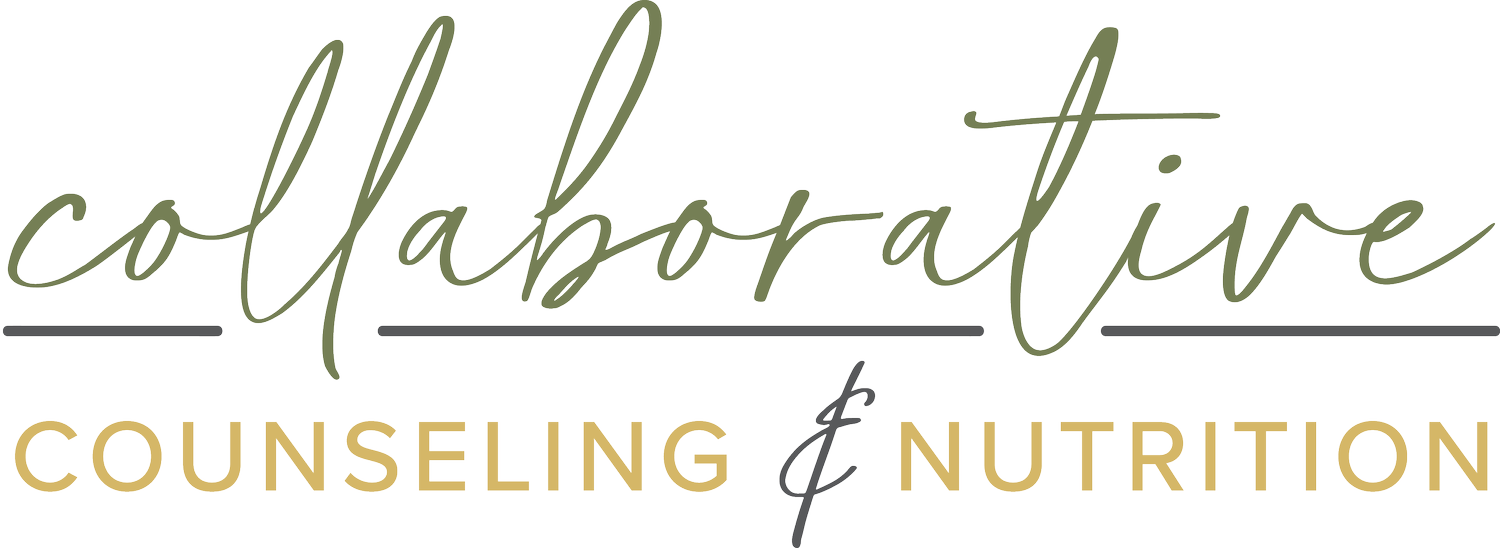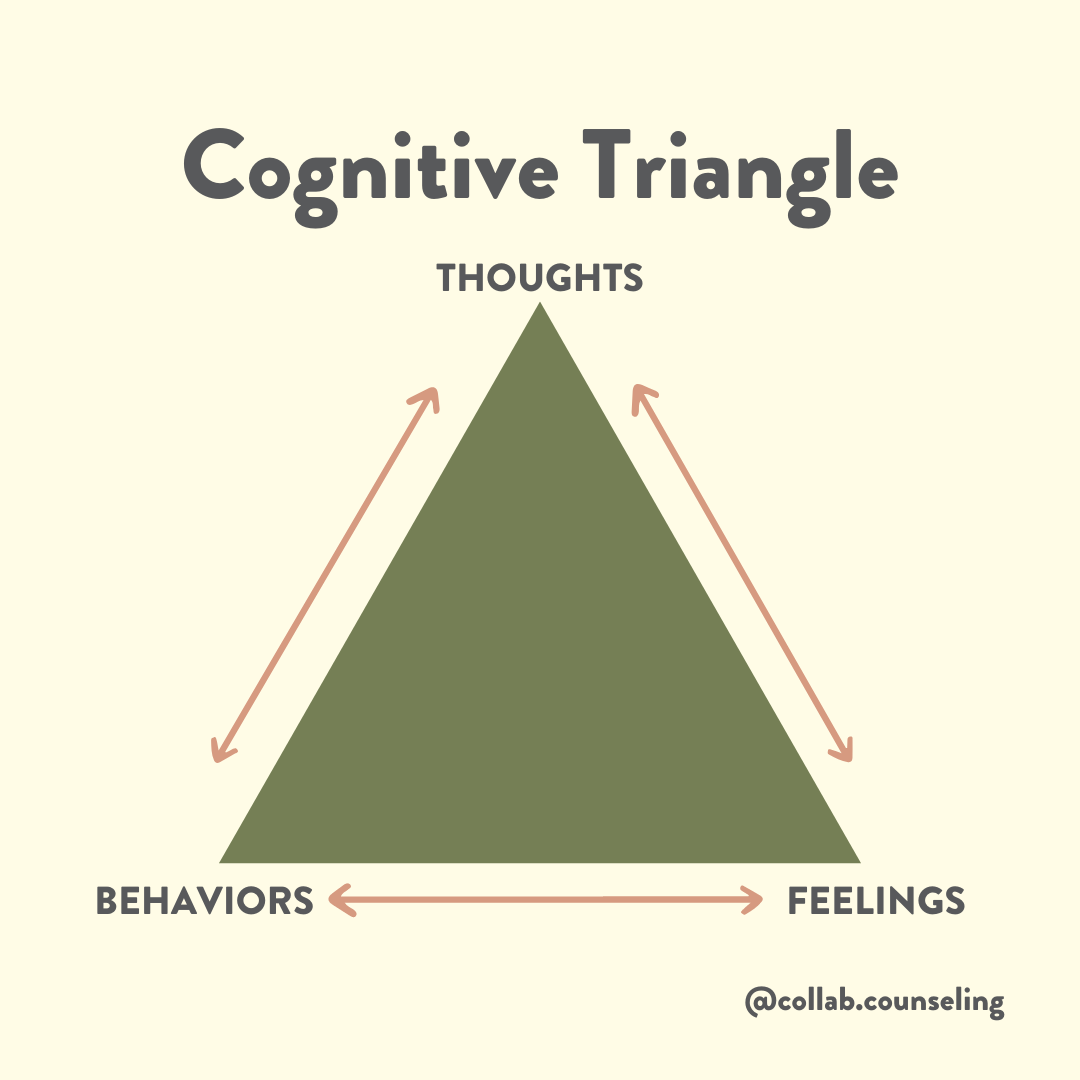How to Recognize and Feel Your Feelings
As clinicians specializing in eating and body image struggles, we see firsthand how emotions and feelings can impact an individual. In fact, we believe eating disorders are emotional management systems. Essentially, food is used to manage and deal with emotions. Food becomes the coping tool. Today, we are discussing the difference between emotions and feelings, and sharing tips for identifying validating, and feeling your feelings.
What are Emotions and Feelings?
While emotions and feelings are sometimes used interchangeably, it’s important to note that they are not the same thing.
Simply put, emotions are reactions we experience in response to life events and situations. They tend to come and go quickly and have corresponding body language, sensations, and facial expressions. Emotions manifest in the unconscious mind. Throughout the years, several psychologists have determined there are 6-8 basic emotions, including anger, fear, sadness, disgust, surprise, anticipation, trust, and joy [1].
Feelings are how we interpret our emotions and make sense of them, making it a conscious act. Feelings impact our thoughts, mood, and behaviors.
Let’s say you are not a fan of spiders, like me. When I see a spider or know a spider is in my general vicinity, the emotion I experience is fear. When I experience fear when a spider is near, I might recoil to protect myself, let out a scream-like noise if it’s too close, or leave the space I’m in. That’s how my fear is being expressed.
Positive, Negative, Good, and Bad Feelings
As humans, we experience a variety of emotions and feelings on a daily basis. I found that emotions are often labeled ‘positive’ and ‘negative’, ‘good’ or ‘bad’, etc. While these labels can be helpful, similarly to food labels, we can start to believe that it’s not okay or even wrong to experience negative or bad emotions, which is not true.
All emotions and feelings are valid and normal to feel and experience.
It can be helpful to consider exploring categorizing emotions as ‘comfortable’, ‘neutral’, or ‘uncomfortable.’ Categorizing them in this way takes some of the stigma, especially if we are feeling something that is labeled negative, like anger or sadness. It helps you to identify how you experience specific feelings, which can help you determine how to tend to them.
Feelings, Thoughts, and Behaviors
Let’s chat about the Cognitive Triangle. It’s a significant component of Cognitive Behavioral Therapy (CBT) and helps to show the interrelated nature of our behaviors, thoughts, and feelings.
Let’s say you are celebrating a family member’s birthday over the weekend. You are currently eating healthy and watching your calories, so you know it’s unlikely that you’ll eat any of the food or desserts at the party. As you are enjoying making memories with your family, the pizza and ice cream bar look too good to pass up. After fighting with the voice in your head, you go for a few slices of pizza and a few bites of ice cream. Afterward, you feel guilty, worried, and disappointed. You have thoughts of how you lack willpower and are a failure for giving in to the food. So, the next day, your behavior looks like restricting food and doing a double workout to make up for all the food you ate the day before.
Do you see how feelings, thoughts, and behaviors are all connected? Can you see how restricting food and increasing exercise is being used to manage uncomfortable feelings? The judgment of our feelings, as good or bad, can dictate our thoughts and behaviors. But guess what?!
All feelings are VALID.
Read that line one more time. No matter what has been communicated to you in the past about your feelings, they are all valid.
It might feel easier or more comfortable to ignore an uncomfortable feeling by shoving it down, numbing it, distracting yourself, or pretending it does not exist. And even though it might feel like they will last forever, they often decrease in intensity or move through you faster than you realize when you take the time to feel them. Because…
Feelings are not forever.
Think of a time when you experienced an uncomfortable emotion that you shoved down/pretended didn’t exist. How did that go? Did it work? Did you eventually experience the emotion? Or feel it for a long time? Now think of a time when you experienced an uncomfortable emotion and sat with it. How did that go? Did it last as long as expected?
Have you ever tried to push a beach ball underwater? If so, you know it’s difficult to submerge it underwater completely without effort, right? If you don’t keep enough consistent pressure, it will pop up to the surface of the water.
The beach ball is a representation of your feelings. No matter how good you think you are at shoving down or numbing or pretending your feelings don’t exist, feelings will find a way to be felt and expressed.
Feeling Your Feelings
How many times have you heard the phrase, ‘Feel Your Feelings’? Do you know what that means or how to do it? A simple definition of ‘Feeling Your Feelings’ includes identifying, validating, feeling, expressing, and/or sitting with your emotions.
For some, it might be difficult to do if you grew up in a household:
where feelings were not discussed
where your feelings were never validated or acknowledged
where it was not safe to feel or express your emotions
where you were told your feelings were too big and needed to be hidden/tucked in/shoved down
Or perhaps you are someone that has experienced trauma or situations in life that caused emotions to feel too big and overwhelming to handle and you find it easier to not deal with feelings stuff. Maybe you’ve been made to believe that having feelings or expressing certain ones is a sign of weakness.
We also live in a culture where we receive so many mixed messages about how we should or shouldn’t experience and feel our feelings. #toxicpositivity anyone?
Everyone deserves to be able to share and express their feelings, including you!
The good news is that we have some tips below for identifying, validating, experiencing, and sitting with your emotions.
How to Start Feeling Your Feels
1. Build awareness and get curious. This is a crucial first step for so many things in life. You, as a human, have emotions and feelings. Feelings and emotions are normal. This is awareness. How do you experience specific feelings? Where do you feel them in your body? How do you respond physically and mentally to specific emotions? What feelings are uncomfortable for you? Which are comfortable or neutral? What do you do with uncomfortable feels and why? Spending time in this step helps to build mindfulness, interoceptive awareness, and a deeper connection with yourself.
source: blog.calm.com
2. Name them. If you haven’t ever done this, consider using The Feelings Wheel to help you. There are a handful of different variations online, so take your pick. The Feelings Wheel can help you identify your feelings.
Let’s say you are feeling bad. You aren’t exactly sure why and don’t exactly know what’s going on. If we look at The Feelings Wheel under the bad section, we can either feel bad or be feeling bored, busy, stressed, or tired. Let’s say you identify that you’re feeling bad because you are busy. Perhaps you’ve felt busy before and this feels different, so maybe you could take it a step further and identify that you’re feeling pressured, due to extra work projects and social commitments. Congratulations, you’ve identified your feelings!
3. VALIDATE. This step is often missed, including by yours truly. When we understand that emotions and feelings are part of the human experience and understand that they are all valid, it helps us begin to start validating our own feelings. Validating your feelings can be as simple as saying ‘I feel really anxious today about going to work, and that’s okay. I’m allowed to feel anxious.’ If haven’t ever done this or do not do it regularly, it will take some practice. Do not expect that you’ll be able to validate every feeling you feel. Set realistic expectations for yourself. And if you find it difficult to validate your feelings, explore the reasons why.
4. Let yourself feel your feelings. Feeling your feelings is not always easy, especially without practice. Feeling our feelings means tuning into what you’re feeling and what is happening in your body. It also means allowing the emotion to be expressed. This can be done through breathwork, sound, movement like dancing or shaking, talking to someone, comforting yourself, and/or just sitting with the feeling. Sitting with the feeling might feel really uncomfortable at first. Acknowledge that and validate it. To practice sitting with your feelings, it could be helpful to set a timer for a short amount of time (2-5 minutes to start), be mindful during that period, and follow up with a coping tool.
5. Create a Coping Tools Fanny Pack. Last winter, we shared some tips for creating your own self-care practice and creating your own coping tools fanny pack can be done similarly. Coping tools help to support you when experiencing specific emotions, usually ones that are uncomfortable. If you work with a therapist, discussing coping tools with them can be helpful. Google is also a great place to start. Similar to self-care strategies, coping tools need to work for you. They can include breathwork, using sound (humming, screaming, singing) to release feelings, movement (dancing, tapping, yoga, shaking, running) to release feelings, talking to someone, doing a grounding practice, using sensation (running hands under cold water, holding an ice cube), or doing something creative (journaling, drawing, painting). This is by no means an exhaustive list, but it’s a place to start.
Moving Forward
We hope these tips help you better understand your feelings and how to feel them. In our next post, we will be discussing how to tune into social and emotional hunger!
Resources Used:
[1] Gu, S., Wang, F., Komotar, R. J., Bourgeois, J. A., & Huang, J. H. (2019). A model for basic emotions using observations of behavior in Drosophila. Frontiers in Psychology, 10. https://doi.org/10.3389/fpsyg.2019.00781
Collaborative Counseling & Nutrition is an outpatient nutrition and body image counseling center, with locations in Indianapolis and Carmel, that provides compassionate, holistic eating disorder treatment. Through practicing mindfulness, intuition, and Health At Every Size, we are on a mission to help you find a true state of well-being! We take an anti-diet, weight-inclusive approach with all our clients and work to help guide you towards a way of healthy living designed by you, just for you! This post is for education purposes only and should not be used as a substitute for treatment for an eating disorder. If you are looking for a registered dietitian or therapist to assist you on your recovery journey, please reach out today!



